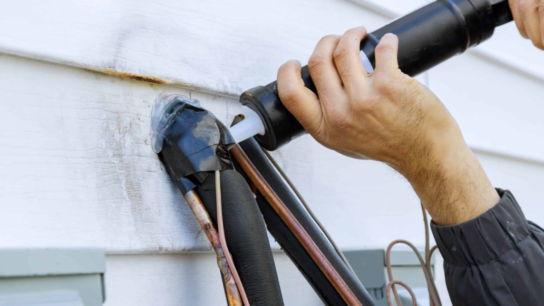Energy-efficient windows and doors play a crucial role in improving the comfort, energy efficiency, and sustainability of your home. By investing in high-performance windows and doors, you can reduce energy consumption, lower utility bills, enhance indoor comfort, and contribute to environmental conservation. In this guide, we’ll explore the benefits of energy-efficient windows and doors, the options available, and why they are a smart choice for homeowners looking to improve their home’s energy efficiency.
Subtitles:
- Benefits of Energy-Efficient Windows and Doors
- Options for Energy-Efficient Windows and Doors
Benefits of Energy-Efficient Windows and Doors
1. Improved Energy Efficiency
Energy-efficient windows and doors are designed to minimize heat transfer, reduce air leakage, and enhance insulation, leading to:
- Energy Savings: Lower energy consumption for heating and cooling, resulting in reduced utility bills and long-term cost savings.
- Comfort: Improved thermal performance, reduced drafts, and more consistent indoor temperatures for enhanced comfort year-round.
2. Environmental Sustainability
By reducing energy usage, energy-efficient windows and doors contribute to environmental conservation and sustainability:
- Carbon Footprint Reduction: Lower energy consumption leads to reduced greenhouse gas emissions, supporting environmental efforts to combat climate change.
- Resource Conservation: Energy-efficient materials and technologies promote resource conservation and responsible use of natural resources.
3. Enhanced Indoor Comfort
Energy-efficient windows and doors contribute to a more comfortable indoor environment by:
- Reducing Heat Gain and Loss: Low-emissivity (Low-E) coatings, multiple glazing layers, and insulated frames help regulate indoor temperatures and minimize heat transfer.
- Noise Reduction: Improved insulation properties can also reduce outside noise infiltration, creating a quieter and more peaceful indoor environment.
4. UV Protection and Furniture Preservation
Energy-efficient windows often include features such as UV-resistant coatings or films that protect indoor furnishings, flooring, and artwork from:
- Fading: Minimize the fading effects of UV rays on fabrics, carpets, wood surfaces, and other interior materials, preserving their appearance and longevity.
- UV Exposure: Reduce exposure to harmful UV radiation, which can also contribute to a healthier indoor environment.
Options for Energy-Efficient Windows and Doors
1. Window Options
Choose from a variety of energy-efficient window options tailored to your home’s design, climate, and performance requirements:
- Double-Pane Windows: Insulated glass units (IGUs) with two panes of glass and a sealed airspace between them provide enhanced thermal performance and reduced condensation.
- Triple-Pane Windows: For maximum energy efficiency, consider triple-pane windows with three layers of glass and advanced gas fills such as argon or krypton for improved insulation.
- Low-E Coatings: Low-emissivity coatings on glass surfaces minimize heat transfer, block UV rays, and improve energy efficiency by reflecting infrared heat back into the room.
2. Frame Materials
Select frame materials that offer both durability and energy efficiency:
- Vinyl Frames: Low-maintenance, energy-efficient vinyl frames provide excellent insulation and thermal performance, reducing heat transfer and air leakage.
- Wood Frames: Natural wood frames offer timeless appeal and can be combined with energy-efficient features such as insulated glass and weatherstripping for optimal performance.
- Fiberglass Frames: Strong, durable fiberglass frames provide excellent insulation properties, resistance to weather elements, and low thermal conductivity.
3. Door Options
Upgrade your doors to energy-efficient options that complement your home’s style and performance needs:
- Insulated Exterior Doors: Choose insulated exterior doors with weatherstripping, thermal breaks, and energy-efficient cores to minimize heat loss and air infiltration.
- Energy-Efficient Glass: Opt for doors with energy-efficient glass options, such as Low-E coatings, multi-pane configurations, and gas fills for enhanced insulation.
- Weatherproofing Features: Ensure proper weatherstripping, thresholds, and seals on doors to prevent drafts, air leaks, and energy waste.
4. Energy-Efficient Features
Explore additional energy-efficient features and technologies for windows and doors:
- Smart Glass Technologies: Consider dynamic or switchable glass technologies that adjust transparency, tint, or shading based on sunlight intensity, time of day, or user preferences.
- Integrated Blinds or Shades: Built-in blinds, shades, or between-glass options provide privacy, light control, and insulation while reducing the need for additional window treatments.
- High-Performance Hardware: Choose energy-efficient hardware such as low-conductivity spacers, insulated frames, and airtight seals for optimal performance.
By selecting energy-efficient windows and doors tailored to your home’s unique requirements, you can enjoy a range of benefits, including lower energy costs, improved comfort, enhanced environmental sustainability, and preservation of indoor furnishings. Consult with reputable window and door manufacturers or energy efficiency experts to assess your options, evaluate performance ratings, and choose the best solutions for maximizing energy savings and enhancing your home’s overall performance and value.








